Abstract
The ligninolytic fungus Phanerochaete chrysosporium oxidized phenanthrene and phenanthrene-9,10-quinone (PQ) at their C-9 and C-10 positions to give a ring-fission product, 2,2'-diphenic acid (DPA), which was identified in chromatographic and isotope dilution experiments. DPA formation from phenanthrene was somewhat greater in low-nitrogen (ligninolytic) cultures than in high-nitrogen (nonligninolytic) cultures and did not occur in uninoculated cultures. The oxidation of PQ to DPA involved both fungal and abiotic mechanisms, was unaffected by the level of nitrogen added, and was significantly faster than the cleavage of phenanthrene to DPA. Phenanthrene-trans-9,10-dihydrodiol, which was previously shown to be the principal phenanthrene metabolite in nonligninolytic P. chrysosporium cultures, was not formed in the ligninolytic cultures employed here. These results suggest that phenanthrene degradation by ligninolytic P. chrysosporium proceeds in order from phenanthrene----PQ----DPA, involves both ligninolytic and nonligninolytic enzymes, and is not initiated by a classical microsomal cytochrome P-450. The extracellular lignin peroxidases of P. chrysosporium were not able to oxidize phenanthrene in vitro and therefore are also unlikely to catalyze the first step of phenanthrene degradation in vivo. Both phenanthrene and PQ were mineralized to similar extents by the fungus, which supports the intermediacy of PQ in phenanthrene degradation, but both compounds were mineralized significantly less than the structurally related lignin peroxidase substrate pyrene was.
Full text
PDF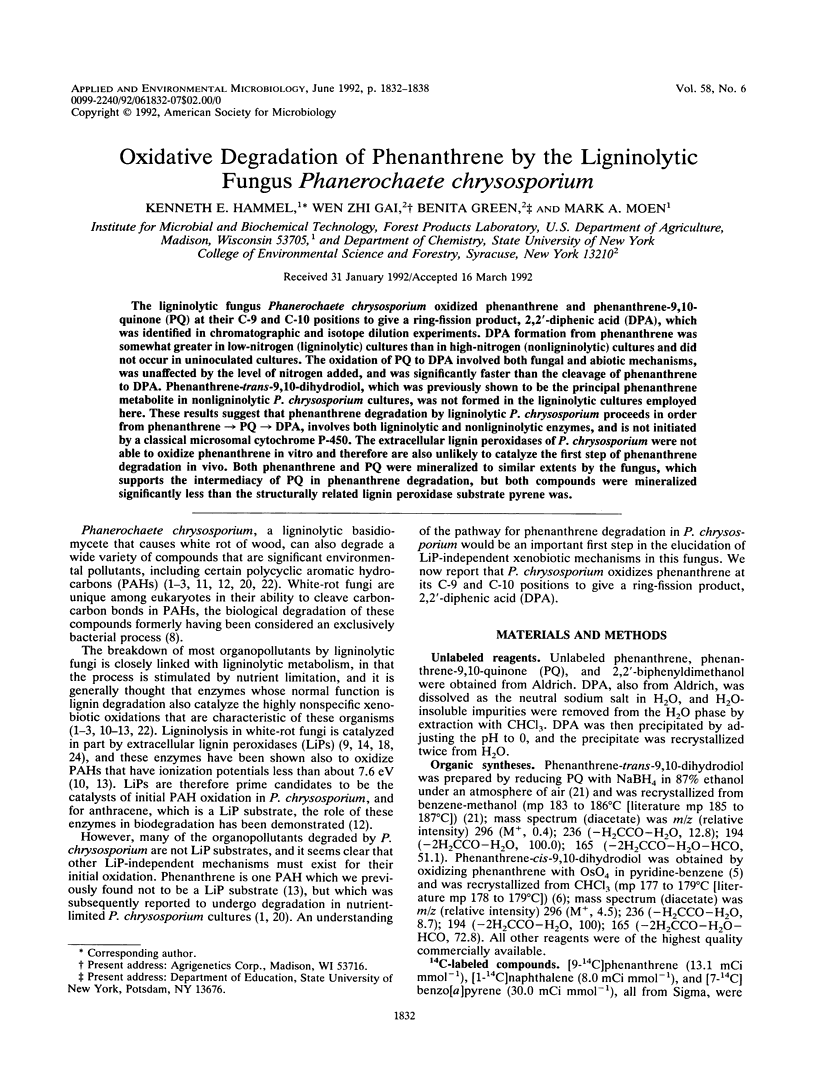
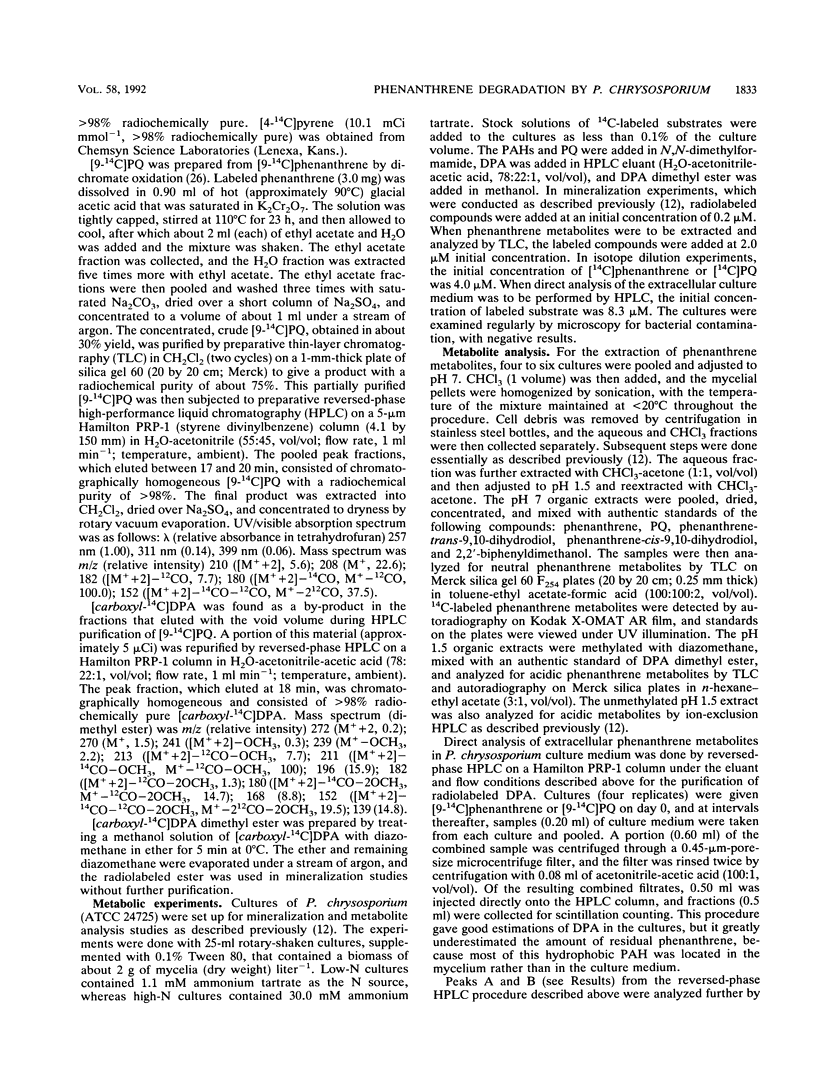
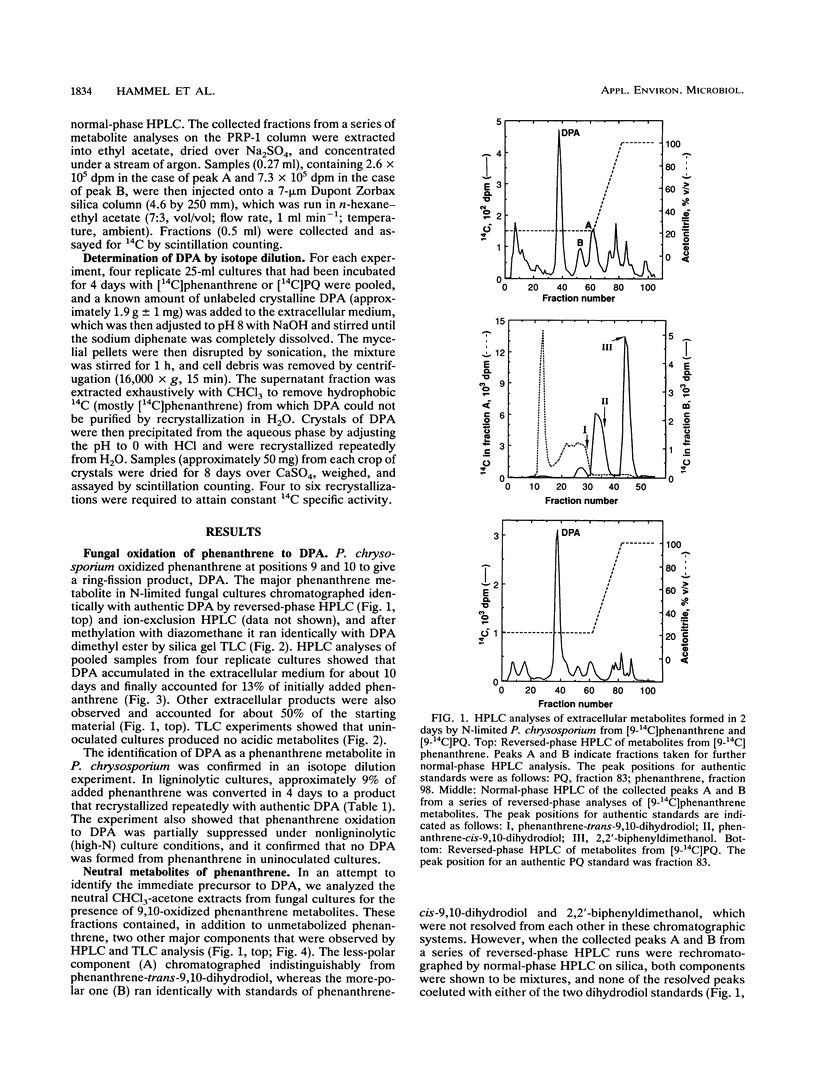
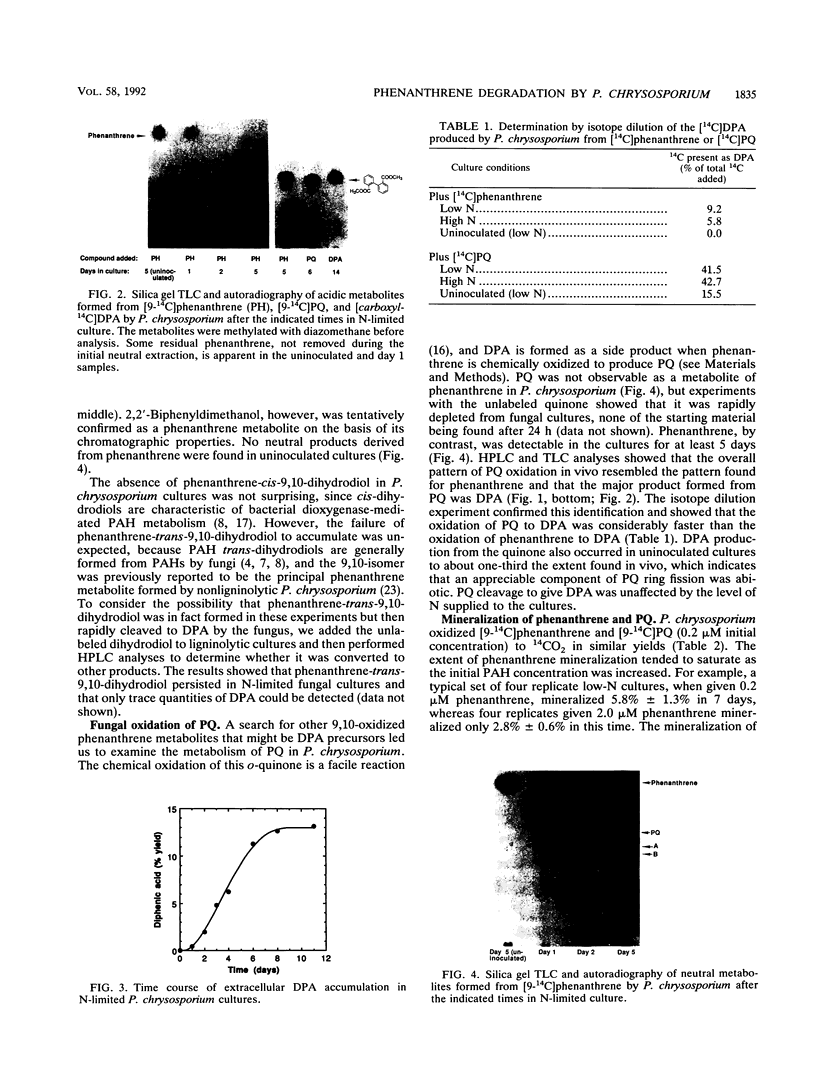
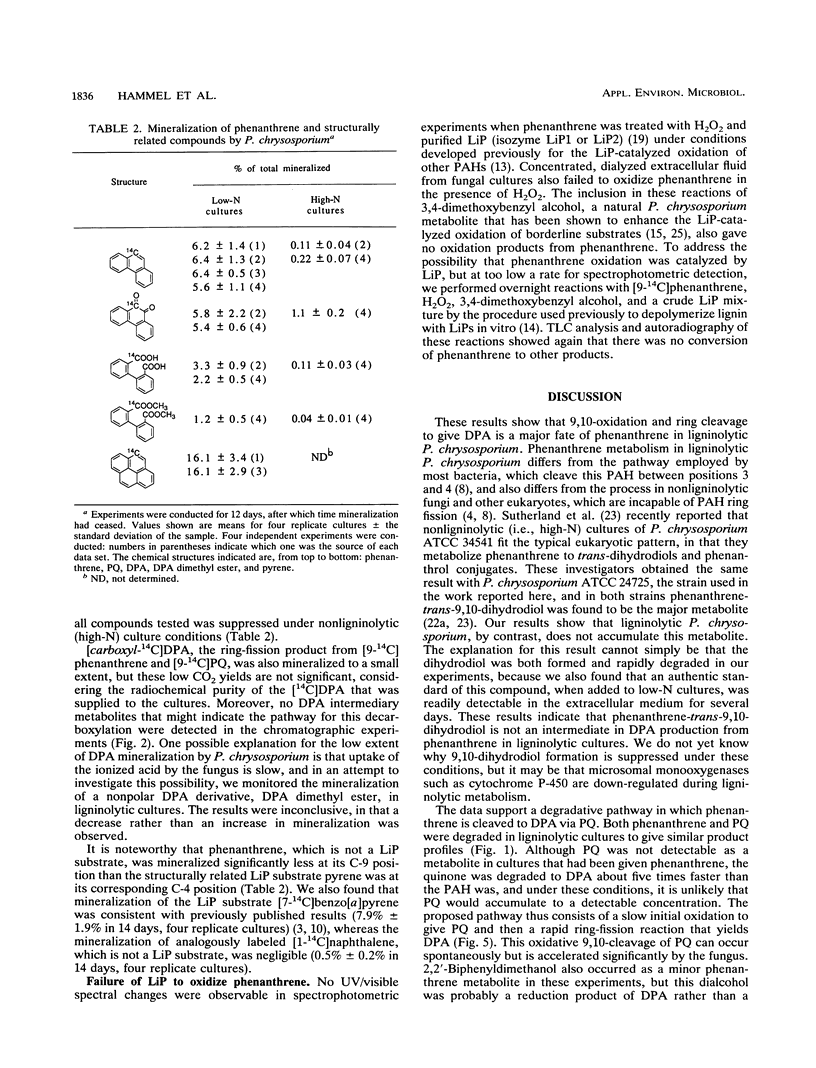
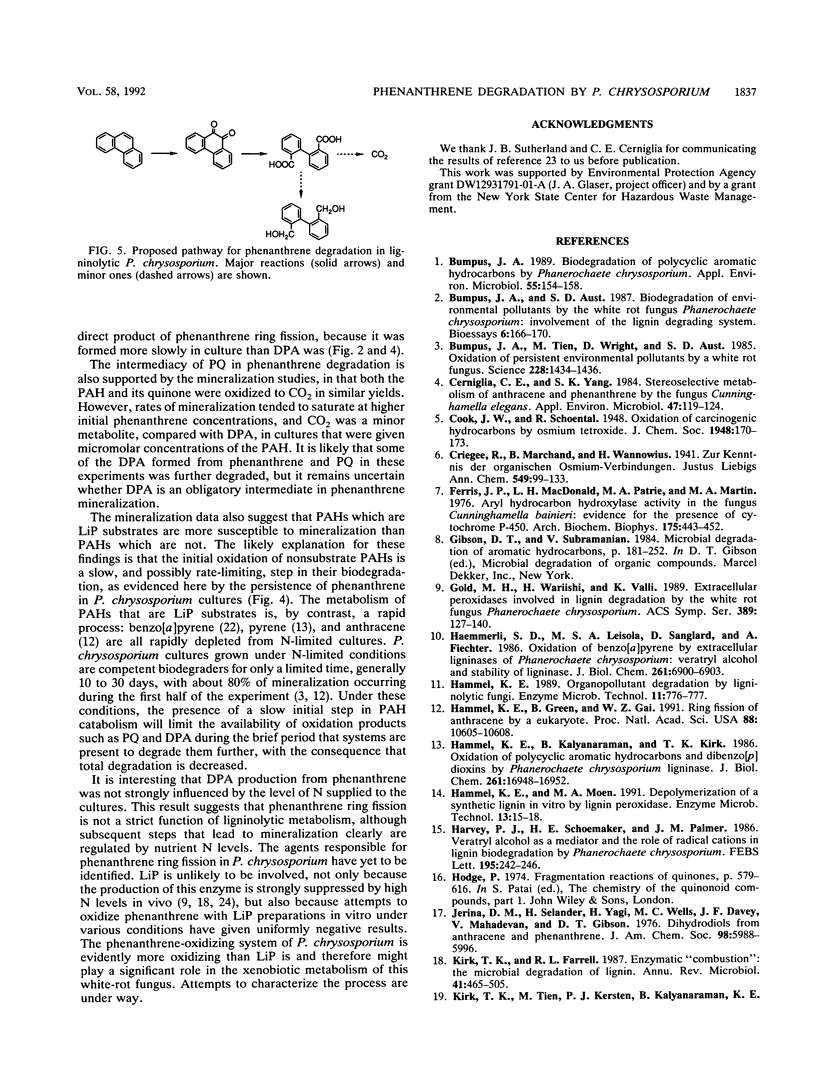
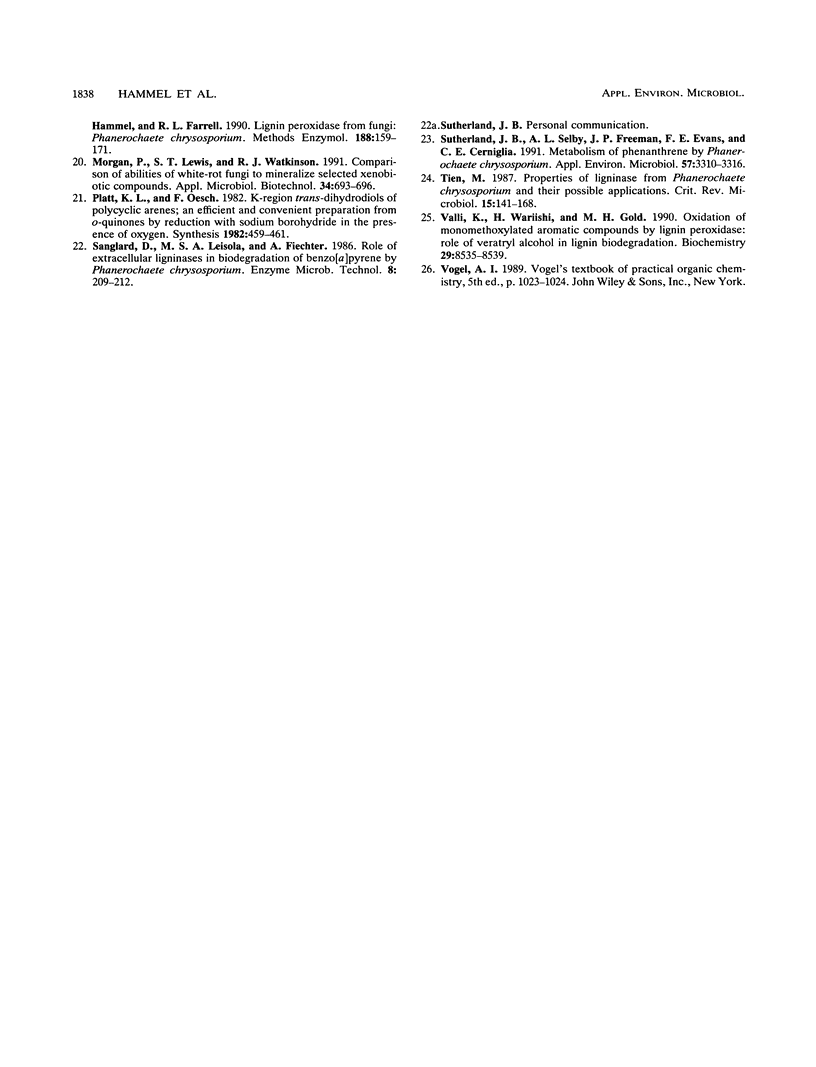
Images in this article
Selected References
These references are in PubMed. This may not be the complete list of references from this article.
- Bumpus J. A. Biodegradation of polycyclic hydrocarbons by Phanerochaete chrysosporium. Appl Environ Microbiol. 1989 Jan;55(1):154–158. doi: 10.1128/aem.55.1.154-158.1989. [DOI] [PMC free article] [PubMed] [Google Scholar]
- Bumpus J. A., Tien M., Wright D., Aust S. D. Oxidation of persistent environmental pollutants by a white rot fungus. Science. 1985 Jun 21;228(4706):1434–1436. doi: 10.1126/science.3925550. [DOI] [PubMed] [Google Scholar]
- Cerniglia C. E., Yang S. K. Stereoselective metabolism of anthracene and phenanthrene by the fungus Cunninghamella elegans. Appl Environ Microbiol. 1984 Jan;47(1):119–124. doi: 10.1128/aem.47.1.119-124.1984. [DOI] [PMC free article] [PubMed] [Google Scholar]
- Ferris J. P., MacDonald L. H., Patrie M. A., Martin M. A. Aryl hydrocarbon hydroxylase activity in the fungus Cunninghamella bainieri: evidence for the presence of cytochrome P-450. Arch Biochem Biophys. 1976 Aug;175(2):443–452. doi: 10.1016/0003-9861(76)90532-4. [DOI] [PubMed] [Google Scholar]
- Haemmerli S. D., Leisola M. S., Sanglard D., Fiechter A. Oxidation of benzo(a)pyrene by extracellular ligninases of Phanerochaete chrysosporium. Veratryl alcohol and stability of ligninase. J Biol Chem. 1986 May 25;261(15):6900–6903. [PubMed] [Google Scholar]
- Hammel K. E., Green B., Gai W. Z. Ring fission of anthracene by a eukaryote. Proc Natl Acad Sci U S A. 1991 Dec 1;88(23):10605–10608. doi: 10.1073/pnas.88.23.10605. [DOI] [PMC free article] [PubMed] [Google Scholar]
- Hammel K. E., Kalyanaraman B., Kirk T. K. Oxidation of polycyclic aromatic hydrocarbons and dibenzo[p]-dioxins by Phanerochaete chrysosporium ligninase. J Biol Chem. 1986 Dec 25;261(36):16948–16952. [PubMed] [Google Scholar]
- Jerina D. M., Selander H., Yagi H., Wells M. C., Davey J. F., Mahadevan V., Gibson D. T. Dihydrodiols from anthracene and phenanthrene. J Am Chem Soc. 1976 Sep 15;98(19):5988–5996. doi: 10.1021/ja00435a035. [DOI] [PubMed] [Google Scholar]
- Kirk T. K., Farrell R. L. Enzymatic "combustion": the microbial degradation of lignin. Annu Rev Microbiol. 1987;41:465–505. doi: 10.1146/annurev.mi.41.100187.002341. [DOI] [PubMed] [Google Scholar]
- Sutherland J. B., Selby A. L., Freeman J. P., Evans F. E., Cerniglia C. E. Metabolism of phenanthrene by Phanerochaete chrysosporium. Appl Environ Microbiol. 1991 Nov;57(11):3310–3316. doi: 10.1128/aem.57.11.3310-3316.1991. [DOI] [PMC free article] [PubMed] [Google Scholar]
- Tien M. Properties of ligninase from Phanerochaete chrysosporium and their possible applications. Crit Rev Microbiol. 1987;15(2):141–168. doi: 10.3109/10408418709104456. [DOI] [PubMed] [Google Scholar]
- Valli K., Wariishi H., Gold M. H. Oxidation of monomethoxylated aromatic compounds by lignin peroxidase: role of veratryl alcohol in lignin biodegradation. Biochemistry. 1990 Sep 18;29(37):8535–8539. doi: 10.1021/bi00489a005. [DOI] [PubMed] [Google Scholar]




